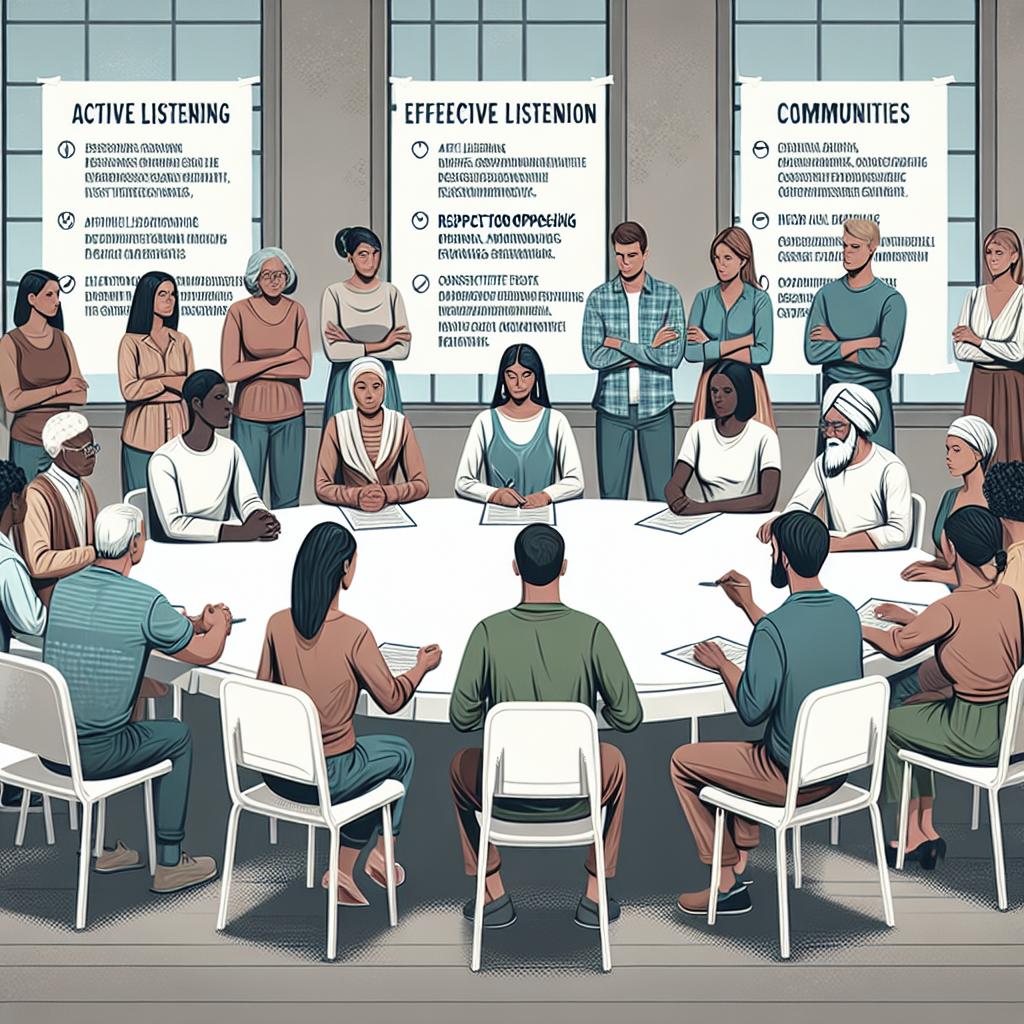Effective Conflict Resolution Strategies for Communities
In today’s diverse and dynamic world, conflicts are natural and can arise in any online community. However, resolving these conflicts effectively is crucial for maintaining harmony and fostering a collaborative environment. This blog post explores the importance of conflict resolution, identifies common types of conflicts found within online communities, and provides a detailed conflict resolution worksheet. It outlines essential strategies such as establishing clear guidelines, analyzing needs and interests, communicating clearly, and implementing solutions. Finally, it highlights the need for reflection to ensure long-lasting resolutions. Read on to discover how these strategies can be applied to real-world online community management and continued personal development.
Why is conflict resolution important?
Conflict resolution plays a crucial role in maintaining the integrity and growth of online communities. Unchecked conflicts can lead to division, decreased participation, and even the disintegration of the community altogether. By resolving conflicts effectively, communities can enhance collaboration, build mutual respect, and foster a sense of belonging among members.
Furthermore, effective conflict resolution contributes to the overall health of a community by ensuring that differing opinions do not escalate into unmanageable disputes. It empowers individuals, allowing them to express their concerns constructively, ultimately leading to innovative solutions that benefit the entire group. This proactive approach to conflict not only keeps a community vibrant and connected but also helps in building resilience in the face of future challenges.
Common conflicts found in online communities
Conflicts in online communities can vary in nature, often stemming from misunderstandings, mismatches in expectations, or differences in communication styles. The anonymity and lack of face-to-face interaction can sometimes exacerbate these issues, leading to over-reactions or miscommunications. Common disputes include disagreements over content, misinterpretation of tone, and clashes of personality.
Additionally, conflicts may arise due to perceived bias or exclusion, where members might feel marginalized or ignored by the community or its leaders. These issues require sensitive handling and an equitable approach to ensure that all members feel valued and heard, paving the way for a more cohesive group dynamic.
Conflict resolution worksheet
1. Establish clear guidelines
Starting with clear, accessible, and well-communicated guidelines is paramount. These serve as a foundational document that outlines acceptable behavior and processes for addressing conflicts. Clear guidelines help set expectations from the start and provide a benchmark against which behavior is measured.
By establishing these parameters, community leaders create a fair environment where all members understand the boundaries and the repercussions of crossing them. This straightforward approach also makes it easier to mediate and resolve disputes, as it provides a reference point for acceptable conduct and communal values.
3. Analyze needs and interests
Once a conflict arises, it’s essential to delve deeper into the underlying needs and interests of the parties involved. This requires patience and empathy, as it often involves discerning the emotions and motivations that fuel the conflict. Understanding these elements is vital to craft resolutions that address the root causes rather than just the symptoms of a disagreement.
By focusing on these needs and interests, community leaders can tailor solutions that are mutually beneficial, thus ensuring that all parties feel satisfied with the outcome. It builds trust and sets a precedent for handling future grievances constructively.
4. Communicate clearly
Effective communication is the cornerstone of any meaningful conflict resolution process. It involves active listening, ensuring all parties feel heard and understood, and promoting open dialogue. Establishing a communication channel where members can freely express their views without fear of judgment is crucial for resolving tensions.
Community managers must facilitate these communications, striking a balance between guiding discussions and allowing organic exchange. Clear, respectful, and empathetic communication not only resolves the current conflict but also serves to improve overall community cohesion.
5. Come up with solutions
Collaborative problem-solving is key to formulating effective solutions. Once the issues are well-understood, community leaders can bring parties together to brainstorm possible resolutions. This participatory approach ensures that solutions are comprehensive and acceptable to everyone involved.
Solutions should aim to address the immediate issues while considering long-term impacts on the community. This method not only resolves the present conflict but also strengthens group relationships, enhances trust, and promotes ongoing engagement.
6. Implement and follow-up
Once a solution is agreed upon, it’s crucial to implement the plan effectively. This involves assigning responsibilities and setting timeframes to ensure that the resolution is adhered to and its outcomes are visible.
Following up on the resolution is an important step that is often overlooked. Regular check-ins with involved parties can help monitor progress and address any resurgence of issues promptly, ensuring the longevity and stability of the solution.
7. Reflect
Reflection is a vital process that allows community members and leaders to learn from the experience. After implementing a resolution, taking time to evaluate what worked and what didn’t provides valuable insights into process improvement.
Encouraging members to share their perspectives on the conflict and its resolution can help identify patterns and potential changes for future guidelines or approaches. Reflection not only aids personal development but also cultivates a culture of continuous learning and adaptation within the community.
In short
Conflict resolution is not merely about settling disputes; it’s a multifaceted approach that involves understanding, communication, and collaboration. By taking proactive steps and learning from each experience, online communities can create a harmonious environment that encourages growth and connection.
Like what you see? Then check out tonnes more.
If you found this article insightful, there is a wealth of knowledge awaiting you with topics ranging from advanced communication strategies to community engagement techniques. Expand your understanding and capabilities to manage and nurture dynamic online communities.
Get product marketing certified.
Elevate your professional skills and delve into the world of product marketing. Certification programs offer in-depth insights and practical tools to shape you into a seasoned marketer capable of amplifying your community’s potential and influence.
More in Community Management
How to manage a community on WhatsApp
Managing a WhatsApp community requires unique strategies given the platform’s messaging-centric nature. Learn how to set boundaries, facilitate discussions, and ensure that communication remains respectful and engaged within these direct spaces.
Building emotional connections in a community
Emotional connection is the glue that holds communities together. Discover how to nurture this bond through empathy, storytelling, and shared experiences to create a resilient and passionate group.
Why community managers need to be adaptable
The ever-evolving landscape of online communities demands adaptability. As a community manager, learning to pivot strategies, adopt new tools, and respond to changes swiftly is key to maintaining relevance and engagement in your community.
Summary of main points
| Key Topics | Highlights |
|---|---|
| Importance of Conflict Resolution | Maintains community integrity, fosters collaboration, builds mutual respect. |
| Common Conflicts | Misunderstandings, biases, communication styles, and personality clashes. |
| Conflict Resolution Strategies | Clear guidelines, needs analysis, effective communication, solution development, follow-up, and reflection. |
| Additional Learning Paths | Community management skills, product marketing insights, emotional connection building. |


